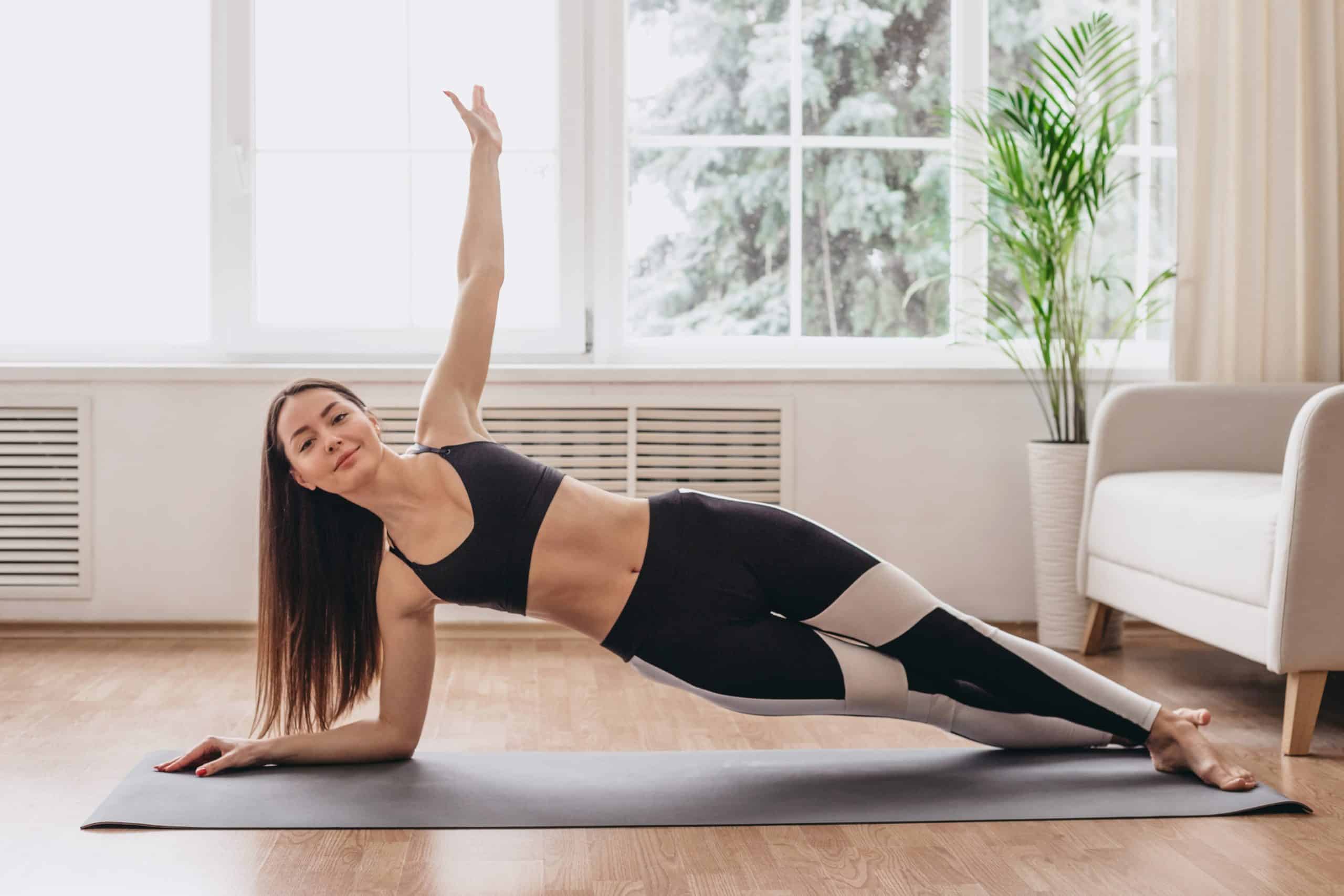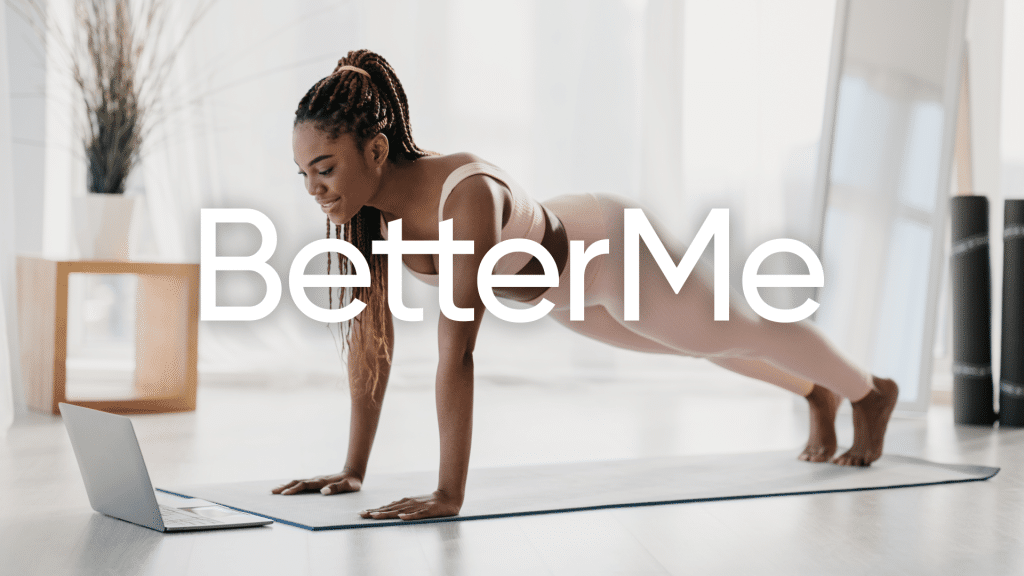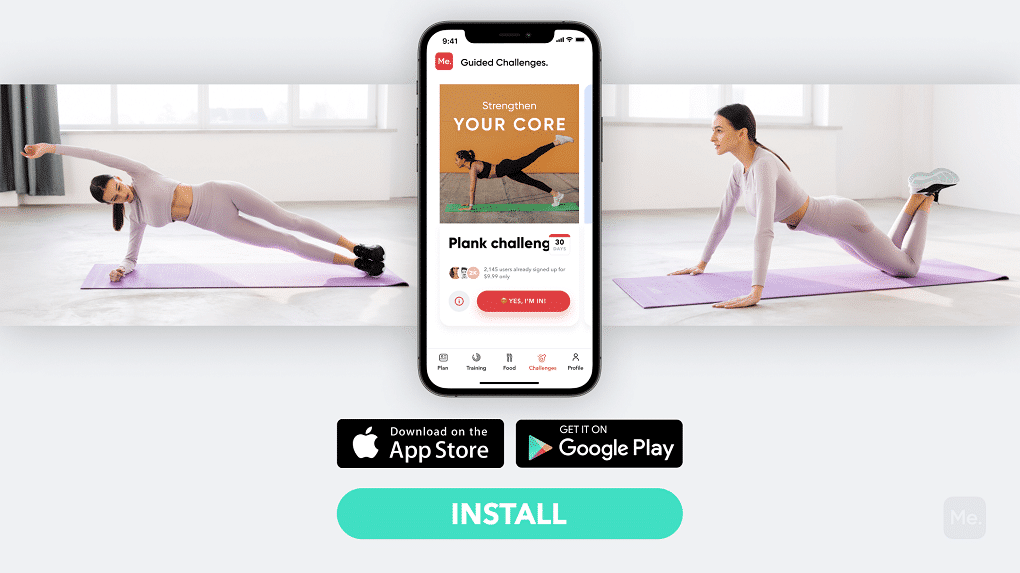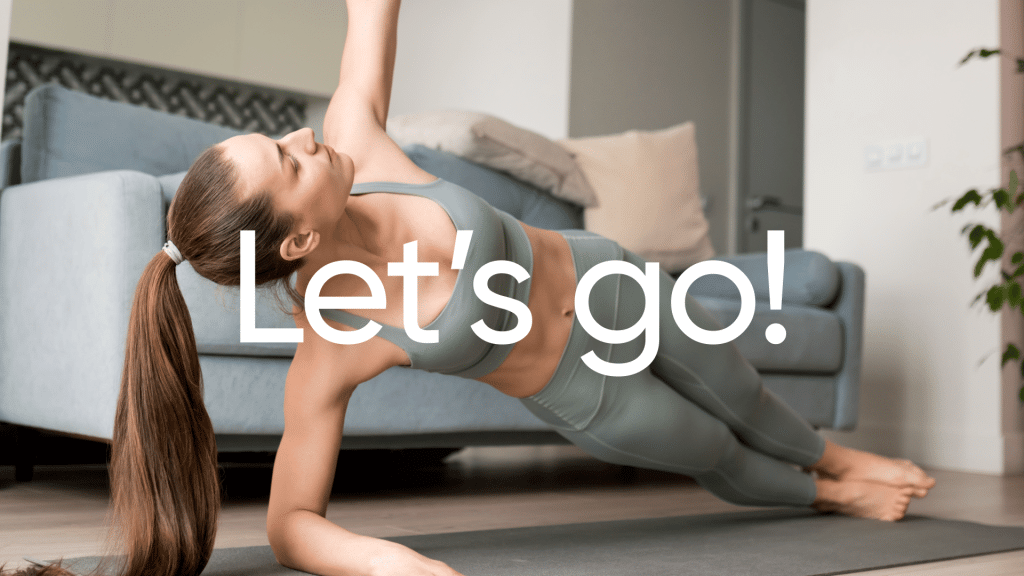your spine, improving posture, and enhancing overall athletic performance. One popular exercise that targets the core muscles effectively is the traditional side plank, known for its ability to sculpt the obliques and build endurance. However, not everyone finds this classic move a perfect fit; some may struggle with balance or simply crave variety in their workout routine. That’s why we’ve compiled a list of 9 easy-to-do side plank alternatives that will not only strengthen your core but also keep you engaged and excited about your fitness journey.
Get your personalized
meal plan!
Are Side Planks Effective?
Yes, side planks are indeed effective for strengthening the core muscles, particularly the obliques. By engaging the muscles on the sides of your abdomen, side planks help to enhance overall core stability, improve balance, and support good posture.
Additionally, they can also contribute to reducing the risk of lower back pain and injuries (2). The isometric hold in a side plank challenges your muscles to maintain stability, making it an efficient and functional exercise for developing a strong and well-rounded core.
What Are Side Planks Good For?
Side planks are a versatile and effective exercise with numerous benefits.
Here are some of the key advantages of including side planks in your workout routine:
1. Core Strength
Side planks primarily target the obliques (muscles on the sides of your abdomen), but they also engage the entire core, including the transverse abdominis and rectus abdominis muscles. This helps build a solid foundation for overall fitness (2).
2. Balance And Stability
By working the stabilizing muscles in your core, side planks improve your balance and coordination, which can enhance your performance in other sports and daily activities (1).
3. Posture
A strong core is essential for maintaining proper posture (2). Side planks help align your spine and develop the muscles that support good posture, reducing the risk of back pain and discomfort.
4. Reduced Risk Of Back Pain
Strengthening your core muscles through exercises like side planks can help alleviate and prevent lower back pain by providing better support for your spine (2).
Read More: Maximize Your Home Workout: 5 Plank Wall Exercises For A Powerful Core
5. Functional Fitness
Side planks mimic the way your core muscles work during everyday movements, making them a functional exercise that translates well into real-life activities (2).
6. Variability
This exercise can be easily modified or advanced to suit different fitness levels, ensuring that you can continue to challenge yourself as you progress.
7. No Equipment Required
Since side planks are a bodyweight exercise, you don’t need any special equipment to perform them. This makes them a convenient and accessible addition to your fitness routine.
Why Are Side Planks So Hard?
Side planks can be challenging for several reasons:
1. Core Engagement
Side planks require you to engage multiple core muscles simultaneously, including the obliques, transverse abdominis, and rectus abdominis. This level of muscle activation can be difficult, especially if you have not yet developed adequate core strength.
2. Balance
In a side plank, you are supporting your body weight on just two points of contact (your forearm/elbow and the side of your foot). This requires a significant amount of balance, which can be challenging for individuals who have not yet developed their stabilizing muscles or are new to the exercise.
3. Body Alignment
Proper form is crucial when performing a side plank to avoid injury and maximize its effectiveness. Maintaining a straight line from your head to your toes requires focus and awareness, which may be difficult for those who are new to the exercise or have limited body awareness.
4. Shoulder Stability
Side planks place stress on the shoulder of the supporting arm. This requires strong and stable shoulder muscles, which can be challenging for individuals with weak shoulders or previous shoulder injuries.
5. Muscular Endurance
Holding a side plank position demands muscular endurance, as your muscles need to maintain the isometric contraction for an extended period. This can be taxing, especially for beginners or those with underdeveloped core muscles.
What Is A Good Substitute For Side Planks?
If you find side planks too challenging or are looking to mix up your workout routine, there are several alternatives that can provide similar benefits, including:
Russian Twist
The Russian twist is a dynamic core exercise that targets the obliques, similar to side planks, but also engages the entire core.
This alternative is performed in a seated position, making it more accessible for those who find side planks challenging due to balance or shoulder stability issues.
It is also suitable for both beginners and advanced exercisers, as it can be easily modified by adjusting the weight used or the range of motion.
How to perform a Russian Twist:
- Sit on the ground with your knees bent and feet flat on the floor.
- Lean back slightly, keep your back straight, and engage your core.
- Lift your feet off the ground, crossing them at the ankles, to create a V-shape with your torso and thighs.
- Hold a weight, such as a dumbbell or medicine ball, with both hands close to your chest.
- Rotate your torso to one side, bringing the weight towards your hip while keeping your core engaged.
- Slowly rotate to the other side, moving the weight across your body in a controlled manner.
- Continue alternating sides for the desired number of repetitions.
BetterMe app will kick you out of the mental funk, shake off your extra weight, rid you off your energy-zapping habits, and help you sculpt the body of your dreams. Intrigued? Hurry up and change your life for the better!
Dumbbell Side Bend
The dumbbell side bend is another effective substitute for side planks that specifically target the obliques.
This standing exercise involves minimal balance and no shoulder strain, making it an excellent option for individuals who struggle with side planks due to these challenges.
It is suitable for all fitness levels, as the weight used can be easily adjusted according to individual strength.
How to perform a Dumbbell Side Bend:
- Stand with your feet shoulder-width apart, holding a dumbbell in one hand with your palm facing inward.
- Place your free hand on your hip or behind your head for balance.
- Engage your core and slowly bend your torso to the side holding the dumbbell, keeping your back straight and your gaze forward.
- Lower the dumbbell as far as comfortably possible without compromising your form.
- Slowly return to the starting position, engaging your obliques to pull your torso upright.
- Perform the desired number of repetitions on one side, then switch sides and repeat.
Seated Spine Twist
The seated spine twist is a gentle core exercise that targets the obliques and helps improve spinal flexibility.
This alternative is performed in a seated position, offering a more accessible option for those who find side planks challenging due to balance or shoulder issues.
It is suitable for individuals of all fitness levels, including those who may have limited mobility or are recovering from injuries.
How to perform a Seated Spine Twist:
- Sit on the ground with your legs extended in front of you.
- Bend your right knee and place your right foot on the outside of your left thigh, keeping your left leg straight.
- Place your right hand on the ground behind you for support, close to your tailbone.
- Inhale and extend your left arm toward the ceiling, lengthening your spine.
- Exhale and slowly twist your torso to the right, bringing your left elbow to the outside of your right knee.
- Hold the twist for a few breaths, deepening the stretch with each exhale.
- Inhale and slowly release the twist, returning to the starting position.
- Repeat on the other side, switching the position of your legs and twisting to the left.
V-Up Twist
The V-Up twist is a dynamic core exercise that targets the obliques as well as the entire abdominal region.
This alternative requires less balance and places less strain on the shoulders compared to side planks, making it suitable for those who find side planks challenging.
It is also best suited for individuals with some core strength who are looking to add variety to their workouts.
How to perform a V-Up Twist:
- Lie on your back with your legs extended and your arms stretched overhead.
- Engage your core and lift both your upper and lower body off the ground simultaneously, bending your knees toward your chest.
- As you lift your body, twist your torso to one side, bringing your opposite elbow toward the raised knee.
- Lower your body back to the starting position in a controlled manner.
- Repeat the movement, alternating sides, for the desired number of repetitions.
Read More: 10 Plank Alternatives For When You Want To Switch Up Your Core Workout
Mountain Climber Crossover
The mountain climber crossover is a full-body exercise that targets the obliques, along with other core muscles, while also providing a cardiovascular workout.
This alternative is a more dynamic option for those who find side planks too static or challenging due to balance or shoulder issues.
It is an exercise suitable for all fitness levels and can be modified by adjusting the speed of the movement.
How to perform Mountain Climber Crossover:
- Begin in a high plank position with your hands placed shoulder-width apart and your body in a straight line from head to toe.
- Engage your core and bring your right knee across your body toward your left elbow in a controlled motion.
- Return your right foot to the starting position, maintaining proper form throughout the movement.
- Repeat the movement with your left knee, bringing it toward your right elbow.
- Continue alternating sides for the desired number of repetitions, maintaining a steady pace.
Medicine Ball Side Slams
Medicine ball side slams are a powerful, explosive exercise that targets the obliques and helps develop core strength and power.
This alternative is performed in a standing position and does not require the balance or shoulder stability needed for side planks, making it a suitable option for individuals who struggle with these challenges.
It is best suited for those looking to incorporate more dynamic, high-intensity movements into their workout routine.
How to perform Medicine Ball Side Slams:
- Stand with your feet shoulder-width apart, holding a medicine ball with both hands.
- Raise the medicine ball overhead, fully extending your arms, and slightly leaning to one side.
- Engage your core and use your oblique muscles to forcefully slam the medicine ball down to the ground on the same side you were leaning toward.
- Catch or pick up the medicine ball as it bounces back up, then immediately raise it overhead again, leaning to the opposite side.
- Repeat the movement on the other side, continuing to alternate sides for the desired number of repetitions.
Seated Medicine Ball Twist
The seated medicine ball twist is an effective core exercise that targets the obliques while also engaging the entire abdominal region.
This seated alternative is suitable for those who find side planks challenging due to balance or shoulder stability issues.
It can be performed by individuals of all fitness levels, as the difficulty can be adjusted by changing the weight of the medicine ball.
How to perform a Seated Medicine Ball Twist:
- Sit on the ground with your knees bent and feet flat on the floor.
- Hold a medicine ball with both hands, close to your chest.
- Lean back slightly, keep your back straight, and engage your core.
- Lift your feet off the ground to create a V-shape with your torso and thighs.
- Slowly twist your torso to one side, bringing the medicine ball towards your hip while keeping your core engaged.
- Rotate to the other side, moving the medicine ball across your body in a controlled manner.
- Continue alternating sides for the desired number of repetitions.
Lean and toned up body isn’t just a far-fetched fantasy. Check out the BetterMe app and watch it propel your weight loss journey into high gear!
Stir The Pot
The stir the pot exercise is an advanced core workout that targets the obliques as well as the entire core.
This alternative requires less balance compared to side planks, making it suitable for those who find side planks challenging.
It is best suited for individuals with a strong core foundation who are looking for a more challenging exercise.
How to perform Stir The Pot:
- Place a stability ball in front of you and kneel on the ground.
- Place your forearms on the stability ball, with your elbows directly under your shoulders.
- Engage your core and extend your legs behind you, assuming a plank position with your forearms on the stability ball.
- Maintain proper alignment and carefully move your forearms in a circular motion, as if stirring a pot, while keeping the rest of your body stable.
- Perform the desired number of repetitions in one direction, then switch directions and repeat.
Half Kneeling Cable Chop
The half kneeling cable chop is a functional core exercise that targets the obliques and helps improve core stability and rotational strength.
This alternative is performed in a half kneeling position, making it more accessible for those who find side planks challenging due to balance or shoulder issues.
It is suitable for all fitness levels and can be easily adjusted by changing the weight on the cable machine.
How to perform a Half Kneeling Cable Chop:
- Set up a cable machine with a handle attachment at chest height.
- Assume a half kneeling position facing the cable machine, with your inside knee on the ground and your outside foot flat on the floor.
- Hold the cable handle with both hands, extending your arms straight out in front of you.
- Engage your core and maintain proper alignment throughout the exercise.
- Pull the cable handle diagonally across your body, rotating your torso and pivoting on your back knee.
- Slowly return to the starting position in a controlled manner, maintaining tension on the cable.
- Perform the desired number of repetitions, then switch sides and repeat.
The Bottom Line
There are plenty of effective side plank alternatives available to help you target and strengthen your core muscles, particularly the obliques, without presenting the challenges that traditional side planks may pose. These alternatives cater to various fitness levels, preferences, and individual needs — allowing you to choose exercises that best suit your abilities and goals.
By incorporating these side plank substitutes into your workout routine, you can continue to build a strong and stable core while keeping your workouts fresh, engaging, and tailored to your unique requirements.
DISCLAIMER:
This article is intended for general informational purposes only and does not serve to address individual circumstances. It is not a substitute for professional advice or help and should not be relied on for making any kind of decision-making. Any action taken as a direct or indirect result of the information in this article is entirely at your own risk and is your sole responsibility.
BetterMe, its content staff, and its medical advisors accept no responsibility for inaccuracies, errors, misstatements, inconsistencies, or omissions and specifically disclaim any liability, loss or risk, personal, professional or otherwise, which may be incurred as a consequence, directly or indirectly, of the use and/or application of any content.
You should always seek the advice of your physician or other qualified health provider with any questions you may have regarding a medical condition or your specific situation. Never disregard professional medical advice or delay seeking it because of BetterMe content. If you suspect or think you may have a medical emergency, call your doctor.
SOURCES:
- Effects of High Intensity Plank Exercise on Physical Fitness and Immunocyte Function in a Middle-Aged Man: A Case Report (2021, nih.gov)
- Why You Should Start Doing Planks (2021, clevelandclinic.org)











